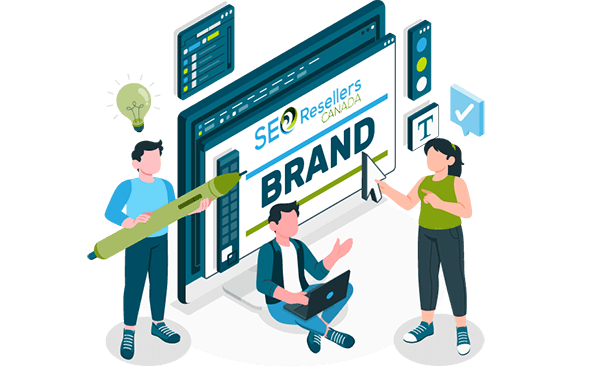Explore how Website Design Kelowna creates interactive websites for all users.
Find Out Exactly How Website Design Functions to Create Involving Individual Experiences
Website design plays an essential function in forming individual experiences across digital platforms. By recognizing vital concepts like use and visual power structure, designers can create sites that not just draw in site visitors yet likewise encourage them to involve. Effective designs and well-thought-out color design can greatly affect customer behavior. There are much deeper considerations that go beyond aesthetics, which are important for cultivating a comprehensive online environment. What are these aspects that can change an easy site into an engaging experience?
Recognizing the Principles of Web Layout
The structure of reliable internet style hinges on a set of core concepts that direct the creation of involving user experiences. These concepts include usability, access, and aesthetic pecking order, each playing an essential role in just how users engage with a website. Functionality assures that customers can navigate without effort, discovering information effortlessly. Ease of access widens the reach of a website, fitting users with diverse demands and capacities. Visual hierarchy directs customers' interest to key components, promoting simpler understanding of material. Additionally, consistency in style components promotes experience, improving user comfort. Color pattern and typography should enhance the general visual while keeping readability. Moreover, receptive layout adapts to different gadgets, guaranteeing a seamless experience across platforms. By adhering to these concepts, developers create websites that not only captivate customers but additionally guide them towards desired activities, inevitably improving interaction and complete satisfaction.
The Importance of Layout in Individual Experience
Efficient format works as a foundation for customer experience, affecting exactly how site visitors perceive and connect with a site. A well-structured design guides users' focus, making it easier for them to browse and find relevant details. By organizing material rationally, designers can develop a smooth flow that reduces cognitive tons, allowing customers to concentrate on their tasks.

Furthermore, receptive formats assure that sites function well across different gadgets, maintaining use despite screen dimension. Eventually, a thoughtful layout is crucial in developing an interesting individual experience that cultivates satisfaction, motivates expedition, and enhances the probability of conversions. Focus to format style is necessary for effective internet interactions and overall customer interaction.
Shade Schemes and Their Influence On Interaction
Exactly how do color schemes affect customer interaction on web sites? Color plans play an essential function in forming user assumption and actions. They stimulate emotions and can greatly affect exactly how customers interact with a site. For example, cozy shades like red and orange can promote interest and urgency, while cooler tones like green and blue commonly communicate calmness and count on.
In addition, consistency in color usage cultivates brand acknowledgment, making customers more probable to involve with familiar visuals. Effective shade comparison improves readability, making sure customers can easily navigate content without stress. Additionally, the emotional organizations of shades can guide customers toward preferred actions, such as clicking a call-to-action switch.
Eventually, a thoughtfully picked color pattern can not just attract customers however additionally improve their total experience, causing greater interaction rates and website here boosted fulfillment. Therefore, web designers must meticulously take into consideration shade choices to optimize individual interaction and foster a favorable setting.
Navigation Best Practices for User-Friendly Site
What makes navigating instinctive Continue and easy to use on a site? Reliable navigating counts on clear structure and logical hierarchy. Customers ought to easily locate food selections, generally placed at the top or side of the web page, enabling fast accessibility to important sections. Uniformity in layout components-- such as fonts, colors, and button styles-- facilitates familiarity, boosting customer comfort. Detailed tags for navigation web links are crucial; they must properly stand for the material individuals can anticipate when clicked.
In addition, integrating a search attribute can aid customers in discovering certain info swiftly. Dropdown food selections can arrange subcategories without frustrating visitors, while breadcrumb trails help customers track their area within the site. Mobile optimization is likewise essential, as touch interfaces demand bigger switches and responsive styles. Eventually, prioritizing i was reading this simpleness and quality in navigation enables customers to involve a lot more effectively with the website, fostering a favorable customer experience.
Making sure Ease Of Access for All Customers
Making certain accessibility for all individuals is important in web style, as roughly 15% of the international populace deals with some kind of handicap. Web developers have to focus on inclusivity by adhering to established standards like the Internet Material Availability Standards (WCAG) These guidelines offer important requirements that boost functionality for people with visual, acoustic, motor, and cognitive impairments.
Key techniques include using detailed alt message for photos, guaranteeing sufficient color comparison, and supplying key-board navigability. In addition, executing display reader compatibility can considerably improve the experience for visually impaired individuals.
Checking web sites with varied customer teams, consisting of those with specials needs, can disclose prospective obstacles and inform required changes. Enlightening style groups about ease of access can foster a culture of inclusivity, inevitably creating a much more easy to use and appealing web experience. By prioritizing accessibility, developers not only expand their target market yet additionally demonstrate social obligation and dedication to equivalent access for all.
Often Asked Questions
What Devices Can I Utilize to Design My Site?
To develop a website, one can use tools like Adobe XD, Figma, Sketch, and WordPress. These systems offer different features for format, prototyping, and material administration, facilitating the creation of functional and aesthetically attractive websites.
Just How Can I Examine My Web site's Individual Experience?
To check a web site's customer experience, one can make use of tools like Google Analytics for habits monitoring, conduct usability screening with real users, and gather feedback with studies to determine locations for improvement and enhance overall interaction.
What Prevail Errors in Web Layout to Avoid?
Usual mistakes in website design consist of messy formats, inadequate navigation, absence of mobile optimization, slow loading times, and using a lot of typefaces or colors. These concerns can hinder user experience and reduce total site performance.
How Frequently Should I Update My Website's Layout?
A site's design need to be updated every one to three years, or much more frequently if substantial fads arise or user feedback indicates discontentment. Normal updates improve looks and functionality, making sure a engaging and fresh individual experience.
Can I Find Out Website Design Without Coding Knowledge?
Yes, one can learn website design without coding understanding. Different devices and systems allow individuals to produce visually attractive websites through drag-and-drop user interfaces, allowing creative thinking without the intricacies of shows languages.
